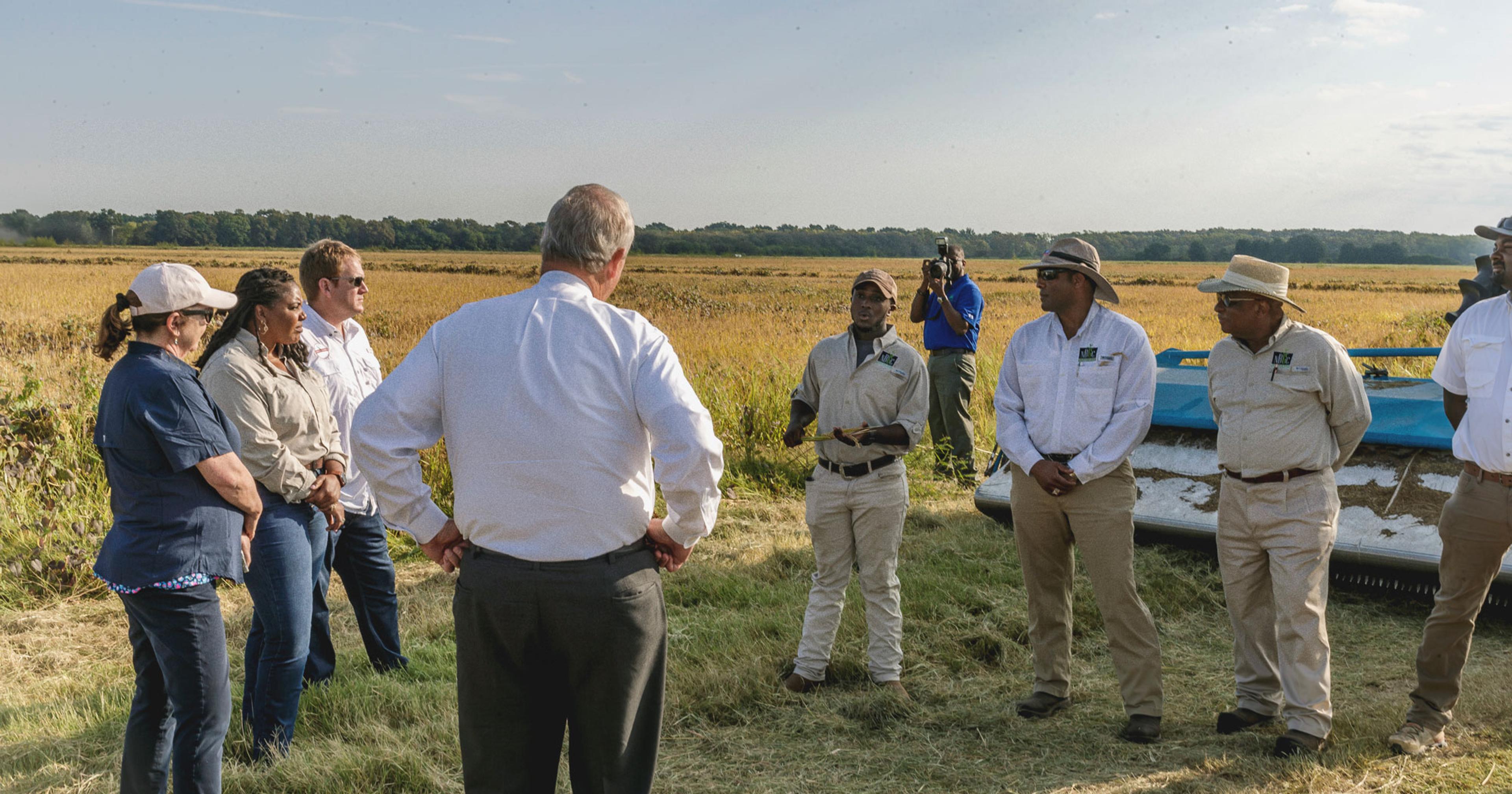An FDA decision will come to fruition soon, meant to help prevent antibiotic resistance in both humans and animals. How will it affect farmers and ranchers?
For years, livestock producers have had access to over-the-counter antibiotics, thanks to a loophole in the Food and Drug Administration’s (FDA) guidelines. That will change come June.
In 2017, FDA set out rules which required prescriptions for antibiotics administered to livestock through feed in a ruling called the Veterinary Feed Directive (VFD). That ruling, also known as Guidance for the Industry 213, made sure that any medically important antibiotics — meaning those used in both humans and animals — given to animals in the form of feed or water require “oversight” from a licensed veterinarian.
In other words, a prescription.
It did not, however, cover those same medications when administered in any other way — say, injections — leaving a significant loophole for farmers and ranchers to access meds over the counter. The intention of the “loophole,” as it’s often referenced, was less of an accidental caveat and more of a step-by-step way for the FDA to ease producers into a hard truth — they would need to be consulting a vet for future antibiotic use. With the 2017 directive, the FDA focused first on where the highest use of antibiotics was: in feed.
“What they did was they went in order of what was being used the least judiciously,” said Joe Armstrong, a licensed veterinarian and cattle production systems extension educator at the University of Minnesota. When it came to antibiotic use in feed, there was “more widespread use and less data behind the use. That’s why they started that and then left injectables on the table,” he said, careful to note this was simply his own view on the matter.
Poultry farmers never had this loophole, and have already been forced to grapple with the restrictions.
In a June 2021 decision called Guidance for Industry 263, the FDA took the next step and set a June 11, 2023, deadline to require prescriptions for all forms of antibiotic treatments. The decision is intended to help prevent current and future antibiotic resistance in animals and humans. When bacteria becomes immune to a drug’s effects, illness becomes extremely hard to treat. If antibiotic resistance spreads widely, the results could be catastrophic.
The focus on antibiotic restrictions comes in conjunction with annually increasing numbers of “superbugs,” or strains of bacteria that have evolved and grown resistant to antibiotics — infecting around 2.8 million Americans and killing nearly 35,000 annually.
“The reason this is coming out is just to make sure that we are using our antimicrobials and antibiotics judiciously to ensure that the technologies remain viable for the future,” said Jesse Fulton, extension educator at the University of Nebraska, Lincoln, and director of Nebraska Beef Quality Assurance.
Under the new ruling, any medically important antibiotic administered to animals through feed or water that is covered under the VFD is now going to require oversight from a licensed veterinarian, no matter how that antibiotic is given.
Beef and swine producers will be most impacted by the decision, as all antibiotic administration in poultry — outside of the hatchery — occurs in the feed or water, meaning poultry farmers never had this loophole, and have already been forced to grapple with the restrictions.
“If that area doesn’t have enough cattle or enough people to support a veterinarian, that’s where we’re going end up in trouble.”
While some champion the new ruling as a way to prevent antibiotic resistance and ensure producers are using these medications as judiciously as possible, the coming change leaves some producers worried about access to critical medical care for their livestock — which can be hard to come by in rural areas. In fact, according to 2019 USDA data, 44 states are experiencing shortages in large-animal veterinary care, an issue even more prominent in remote regions.
According to Armstrong, it’s less of an overall “shortage” of vets and more an issue of keeping vets in remote areas. “There are areas that cannot support a veterinarian realistically with a lifestyle that doesn’t cause you to burn out,” he said. But whether or not you characterize it as a shortage, the fact remains that remote areas often rely on one vet to cover hundreds of miles — an unfeasible ask if there are too many producers in need. “If that area doesn’t have enough cattle or enough people willing to work with a veterinarian to support a veterinarian, that’s where we’re going end up in trouble,” Armstrong added.
Producers that once relied on easy, unfettered access to these medications will need to have new plans in place by June, when the new regulation kicks in. When that happens, producers will need a prescription from a licensed veterinarian with which they have a valid veterinary-client-patient relationship (VCPR) to access them.
A VCPR has differing definitions state-to-state but implies that the vet in question has general knowledge of what kind of animals a producer has, their livestock’s medical history, and what kind of illnesses they deal with. This means that in order to access antibiotics come summer, farmers will have to have a relationship in which the vet knows their animals personally (as personally as you can know hundreds of heads of livestock). Not only does the vet need to have seen the animal in question in person, but is required to maintain regular visits — at least once a year — in order to keep the relationship valid. Those without a current VCPR may be left scrabbling to establish this relationship in time, especially in the areas where large-animal vets are in short supply.
Armstrong said in cases where vet visits would require long drive times, rural or small-scale producers may need to get creative. “The drive time is the most daunting thing for a veterinarian. I think people are going to have to talk to their neighbors. They’re going to have to coordinate schedules. They’re going to have to figure out a way to make it worth that veterinarian’s trip,” he said.
In addition to addressing antibiotic resistance, the new restrictions on antibiotic use may also create a new milk market.
Producers with a strong standing relationship with their vet, who already purchase medication from a pharmacy, may not even notice the change. However, when stores not set up to act as pharmacies start pulling the soon-to-be restricted antibiotics from shelves, those who relied on over-the-counter options will have to pivot.
“There are producers that don’t have a very good relationship with their veterinarians, and those are the people that might have some challenges at first,” said Fulton.
But according to Fulton those challenges can be mitigated by forging a strong relationship with a vet as soon as possible. Barring full-blown, unforeseeable emergencies, if a producer has a relationship with their veterinarian, Fulton says they should be able to proactively anticipate the animal’s medical needs and make sure those producers have prescriptions on hand in a timely manner. “There are some people that are a little worried about it now,” he said, noting that it will likely not be a major calamity come June.
The new regulation is in line with consistently stricter policies on antibiotic use over the past few years. In a similar move in 2017, the FDA banned a practice known as growth promotion, in which farmers give livestock antibiotics to make them grow more quickly.
While the practice is now illegal, the use of antibiotics to promote growth in livestock has a long history in America. The process became prominent in the U.S. after scientists at a lab in New York discovered that adding the meds to livestock’s feed not only sped up their growth but also cost less than conventional supplements for feed. It wasn’t until the 1970s that concerned citizens began lobbying for antibiotic-free farming, arguing that the antibiotic-laced feed in food-producing animals could lead to antibiotic resistance in humans.
“It’s going to force some tough conversations to happen about management practices.”
In addition to addressing antibiotic resistance, the new restrictions on antibiotic use may also create a new milk market.
According to a study by the College of Veterinary Medicine published in the Journal of Dairy Science, consumers would gladly purchase milk specifically made from cows only treated with antibiotics when medically necessary — as long as the prices weren’t too much higher than other milk. Robert Schell, the first author of the study, told Morning Ag Clips the study’s findings could lead to a new potential product for dairy farmers.
“What this means is that there could potentially be a large market for RAU (responsible antibiotic use) milk as long as the price isn’t much higher than conventional milk, so it’s a possible new option for conventional farmers,” he said.
Even with hesitations from some livestock producers, from a vet’s perspective, Armstrong says this ruling is a good one. “It’s going to force some tough conversations to happen about management practices and how to get more on the preventative side and avoid the use of antibiotics,” he said. “It will cause a lot of butting of heads but overall, it’s going to push the industry forward and be better for everyone.”







